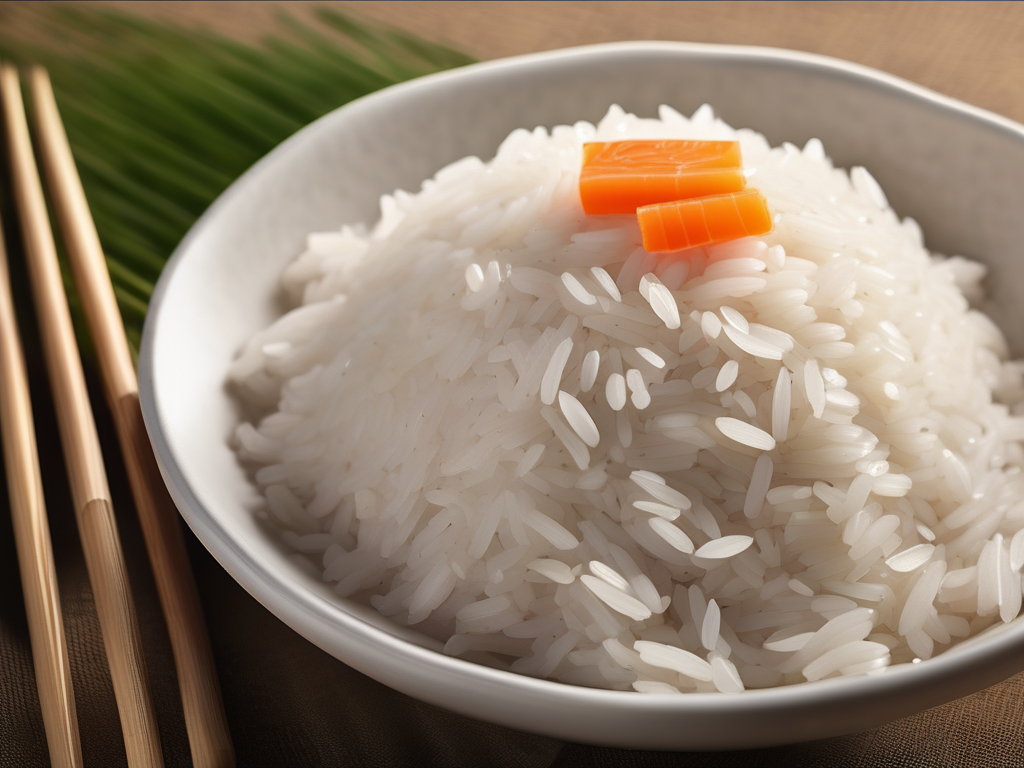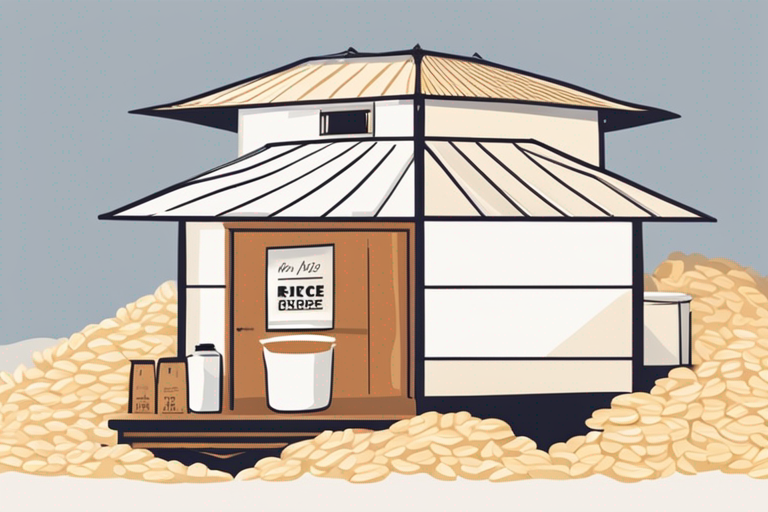
Does Rice Expire: Understanding Rice Shelf Life and Storage Tips
The Ultimate Guide to Rice and Rice Products: Shelf Life, Storage Tips, and Substitutes
Rice is a staple food for a large portion of the world's population, known for its versatility, affordability, and long shelf life when stored properly. In this comprehensive guide, we will delve into the topic of rice expiration, including how to determine if rice has gone bad, provide essential storage tips, explore substitutes for rice vinegar, and discuss alternatives to Chinese rice wine. Whether you are a cooking enthusiast or simply want to ensure the safety and quality of your pantry staples, this guide will equip you with the knowledge needed to make informed decisions about rice and rice products.
Does Rice Expire: Understanding Rice Shelf Life and Storage Tips
Rice, whether white, brown, or wild, is a grain that can last a long time if stored properly. The shelf life of rice varies depending on the type of rice and how it is stored. Here are some general guidelines:
Shelf Life of Different Rice Varieties:
- White Rice: Can last up to 4-5 years when stored in a cool, dry place.
- Brown Rice: Has a shorter shelf life of around 6-12 months due to its higher oil content.
- Wild Rice: Can last up to 1-2 years when stored properly.
Factors Affecting Rice Shelf Life:
- Storage Conditions: Proper storage is key to extending the shelf life of rice.
- Packaging: Sealed packaging helps protect rice from moisture and pests.
- Temperature: Store rice in a cool, dry place away from heat sources.
- Humidity: Keep rice away from high humidity to prevent mold growth.
Proper Rice Storage Tips:
- Use Airtight Containers: Transfer rice to airtight containers or resealable bags to keep out moisture and pests.
- Cool, Dry Place: Store rice in a cool, dry pantry away from sunlight and heat sources.
- Avoid Humidity: Keep rice away from areas with high humidity, such as near the stove or dishwasher.
- Check for Pests: Regularly inspect rice for signs of pest infestation and discard if necessary.
- Rotate Stock: Use older rice first and rotate your stock to ensure freshness.
Exploring Substitutes for Rice Vinegar
Rice vinegar is a popular ingredient in Asian cuisine, known for its mild flavor and versatility in various dishes. However, if you run out of rice vinegar or need a suitable substitute, there are several alternatives you can use in your cooking. Here are some of the best substitutes for rice vinegar and how to use them effectively:
Top Substitutes for Rice Vinegar:
-
Apple Cider Vinegar
- Flavor Profile: Fruity and slightly tangy
- How to Use: Use as a 1:1 substitute for rice vinegar in salad dressings, marinades, and pickles.
- Safety Tip: Opt for raw, unfiltered apple cider vinegar for the best flavor and health benefits.
-
White Wine Vinegar
- Flavor Profile: Mild and slightly acidic
- How to Use: Replace rice vinegar in recipes that require a subtle vinegar flavor, such as dressings and sauces.
- Safety Tip: Choose a high-quality white wine vinegar for optimal results.
-
Lemon or Lime Juice
- Flavor Profile: Citrusy and tangy
- How to Use: Substitute for rice vinegar in recipes that can benefit from a fresh, citrusy flavor, such as seafood dishes and salads.
- Safety Tip: Adjust the amount of juice based on your taste preferences to avoid overpowering the dish.
-
Balsamic Vinegar
- Flavor Profile: Sweet and tangy
- How to Use: Works well in dishes where a rich, sweet note is desired, such as glazes and marinades.
- Safety Tip: Use a small amount to prevent the dish from becoming too sweet.
-
Sherry Vinegar
- Flavor Profile: Nutty and slightly sweet
- How to Use: Substitute for rice vinegar in recipes that call for a complex, nuanced flavor, such as vinaigrettes and sauces.
- Safety Tip: Look for aged sherry vinegar for a more pronounced flavor profile.
Tips for Using Substitutes for Rice Vinegar:
- Taste as You Go: Adjust the flavor balance as needed.
- Adjust the Quantity: Modify the amount to achieve the desired level of acidity and flavor.
- Experiment with Combinations: Mix different vinegars or citrus juices for a unique flavor profile.
Exploring Alternatives to Chinese Rice Wine
Chinese rice wine, also known as mijiu, is a popular ingredient in many Asian dishes due to its unique flavor profile and ability to enhance the taste of various ingredients. However, if you need a substitute for Chinese rice wine, there are several alternatives that can provide a similar depth of flavor and complexity to your dishes. Here are some of the best rice wine substitutes for cooking:
Best Rice Wine Substitutes:
-
Mirin
- Flavor Profile: Sweet rice wine with a slightly lower alcohol content.
- Usage: Add sweetness and depth of flavor to dishes like teriyaki and glazes.
- Ratio: Substitute in a 1:1 ratio for Chinese rice wine.
-
Dry Sherry
- Flavor Profile: Nutty and slightly sweet
- Usage: Suitable for stir-fries, sauces, and braised dishes.
- Ratio: Substitute in a 1:1 ratio for Chinese rice wine.
-
White Wine
- Flavor Profile: Light and acidic
- Usage: Complements a wide range of ingredients in cooking.
- Ratio: Use as a 1:1 substitute for Chinese rice wine.
-
Apple Cider Vinegar
- Flavor Profile: Tangy and fruity
- Usage: Ideal for pickling, vinaigrettes, and marinades.
- Ratio: Combine with a pinch of sugar to replace Chinese rice wine.
-
Rice Vinegar
- Flavor Profile: Slightly stronger taste than rice vinegar
- Usage: Commonly used in Asian dishes, sushi rice, and marinades.
- Ratio: Substitute in a 1:1 ratio for Chinese rice wine.
Tips for Substituting Chinese Rice Wine:
- Adjusting Flavor: Taste as you go to achieve the right balance.
- Recipe Adaptation: Experiment with different vinegars to find the perfect match.
- Storage: Store opened bottles in the refrigerator for freshness.
- Labeling: Clearly label bottles to avoid confusion.
The Ultimate Guide to Rice Expiration: Understanding Shelf Life and Safety
Rice is a staple food with a long shelf life when stored properly. Here are some essential tips to ensure the freshness and safety of your rice products:
Proper Storage Tips:
- Use Airtight Containers: Transfer rice to airtight containers to keep out moisture and pests.
- Cool, Dry Place: Store rice in a cool, dry pantry away from heat sources.
- Avoid Humidity: Keep rice away from high humidity to prevent mold growth.
- Check for Signs of Spoilage: Discard rice if it has an off smell, visible mold, or signs of pest infestation.
How to Tell if Rice Has Gone Bad:
- Off Smell: Musty or sour odor
- Visible Mold: Discard rice with mold growth
- Pest Infestation: Throw away rice with signs of pests
Conclusion
In conclusion, rice and rice products are versatile ingredients that can enhance a wide range of dishes. By understanding their shelf life, storage tips, and substitutes, you can make informed choices in your cooking and ensure the safety and quality of your meals. Whether you are exploring new flavors or simply maintaining the freshness of your pantry staples, this guide provides the knowledge needed to make the most of rice and rice products in your culinary adventures. Enjoy delicious and safe meals with the confidence that comes from proper storage and food safety practices.
For more information on rice and other essential food items, visit our rice page. Happy cooking!

Authoritative Food Safety References
These agencies and university labs inform every tip and health precaution we publish.
USDA FoodKeeper – Cold Storage Guidelines
Official refrigerator, freezer, and pantry timelines maintained by the U.S. Department of Agriculture.
Visit USDA FoodKeeperFDA Produce Safety Rule & Grower Guidance
Field-to-fridge handling practices that prevent contamination of fruits, vegetables, and leafy greens.
Visit FDA Produce SafetyCDC Foodborne Illness Prevention Hub
Surveillance-backed guidance on pathogens, symptoms, and steps to reduce foodborne illness risk.
Visit CDC Food SafetyUC Davis Postharvest Technology Center
University research detailing optimal storage atmospheres for produce after harvest.
Visit UC Davis PostharvestPenn State Extension – Home Food Preservation & Safety
Peer-reviewed extension bulletins on safe canning, chilling, and reheating practices.
Visit Penn State ExtensionScan your food directly and get instant safety info using our AI-powered camera feature.